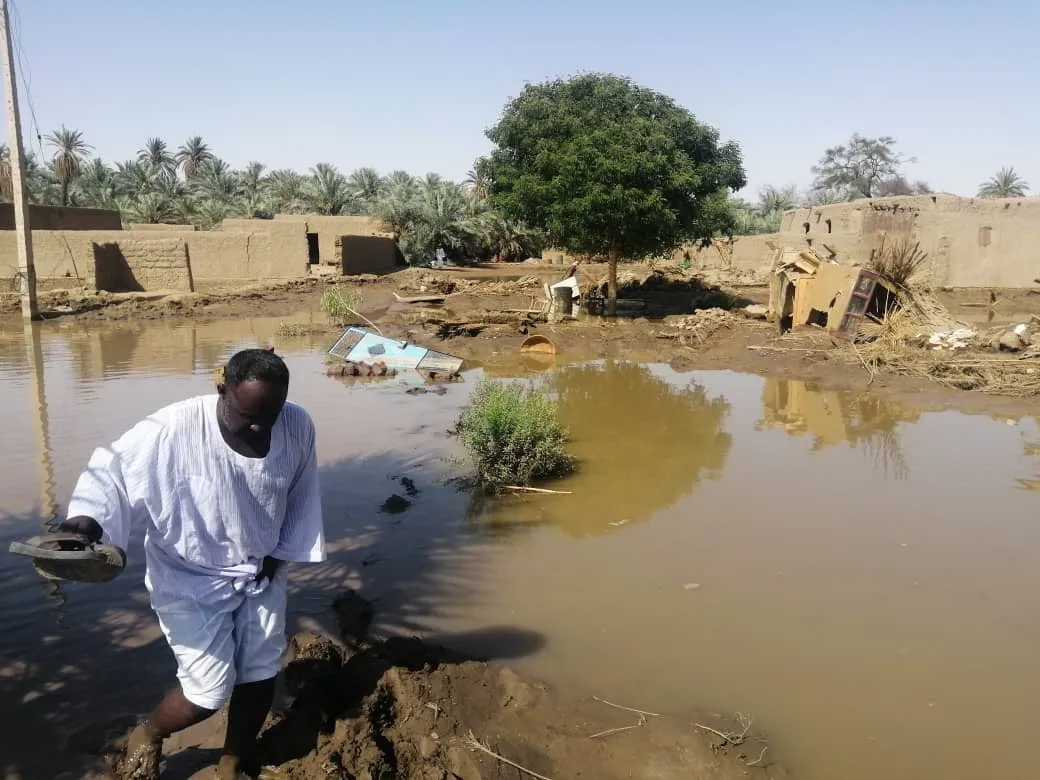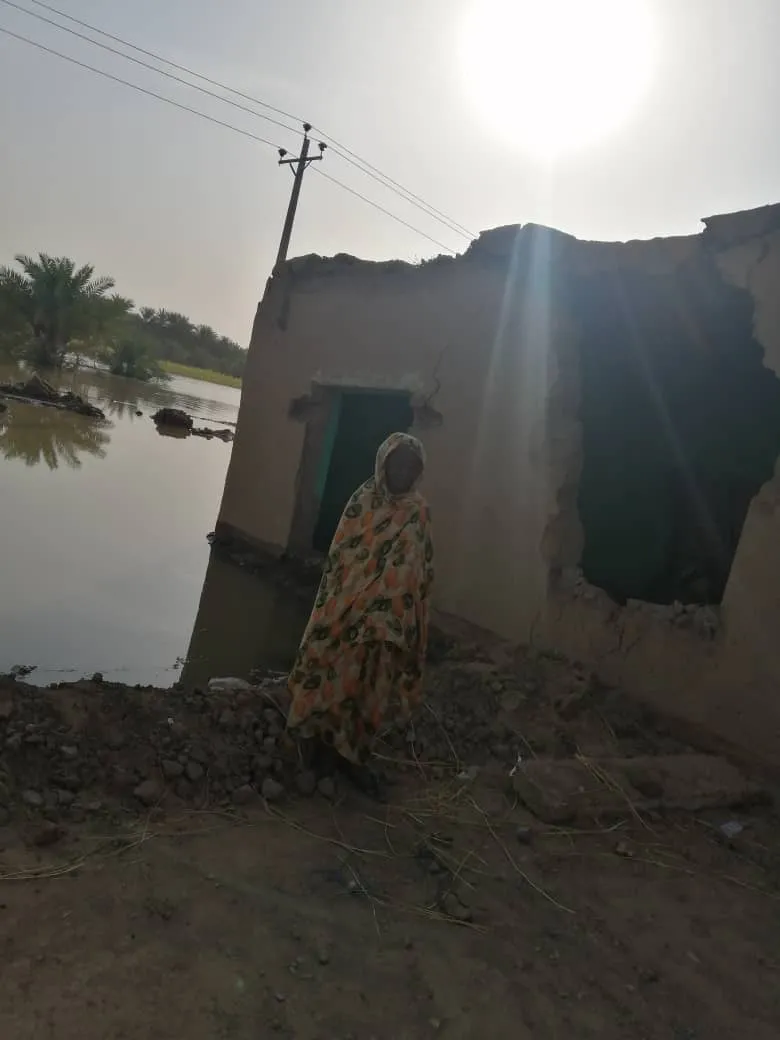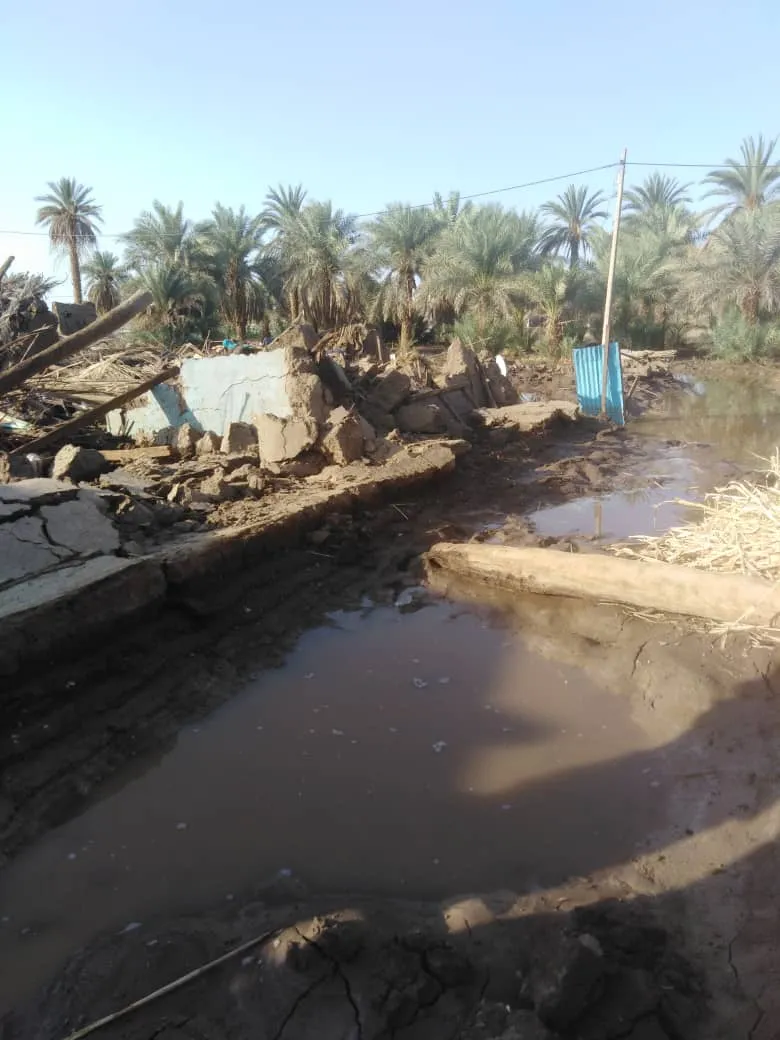Water. Muddy, mosquito-infested water, as far as the eye can see. A few chairs, some bags, a makeshift shelter of a few sticks and palm leaves. This is the living situation for countless families in the East African nation of Sudan. A disaster that doesn’t make headlines in a busy global news cycle.
The past weeks have seen unusually heavy rain fall and flooding in large parts of the country. The rainy season in the East African country usually starts in June and lasts until October. But this year, a record rainfall has been noted since mid-July and water levels of the Blue Nile are still expected to rise in the coming days. As of mid-September, over 111,000 houses have been severely damaged or destroyed, 17 out of 18 states are affected.
“People are literally left with nothing,” reports Tesfaye Hussein, CARE’s Coordinator for Public Health, Water and Sanitation. “They camp out in the open. We’re very concerned for women and young girls in these areas, there simply isn’t enough protection for them. They tend to bear the brunt of such disasters, fetching water from far away places, leaving out meals to feed their children or younger siblings.”



